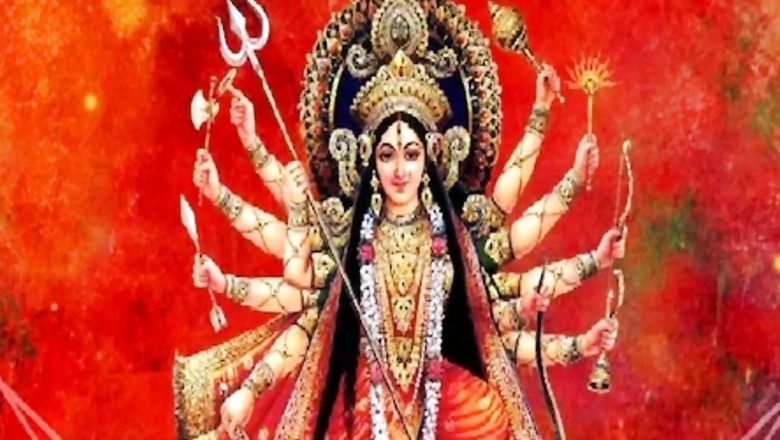
views
Navratri holds a special place in Sanatan Dharma, a time dedicated to the worship of the goddesses, particularly the nine forms of Mata Durga. It is believed that during these nine days, Mata Rani descends to earth and resides among her devotees, blessing them with her divine presence. This year, Navratri will start on October 3, marking the beginning of the sacred celebrations.
Each of the nine days is dedicated to a different form of Durga, and devotees engage in rituals, fasting, and prayers to honour the goddess. It is believed that if Goddess Durga is worshipped with the proper rituals and heartfelt devotion during this time, she is pleased and bestows her devotees with their desired blessings. Therefore, worshipping with full dedication and following traditional customs is essential to invoke her grace.
According to Ayodhya’s astrologer Pandit Kalki Ram, Navratri holds immense significance in Sanatan Dharma. He emphasises that during these nine sacred days, devotees should worship Goddess Durga with utmost cleanliness and devotion, performing her special Shringar (adornment). A key tradition during Navratri is the Sixteen Shringar (Solah Shringar) of Mata Rani, which is deeply rooted in Hindu culture.
The Solah Shringar represents auspiciousness and good fortune. It involves adorning the goddess with various ornaments, garments, and sacred items symbolising prosperity, beauty, and devotion. This practice reflects the devotion of her followers and invokes blessings of happiness, health, and well-being for them.
The Solah Shringar of Goddess Durga is a traditional form of adorning the goddess during Navratri, symbolising auspiciousness and devotion. Here is a list of the 16 makeup and adornment items typically used for the ritual:
Mehendi (Henna) – Applied on hands, symbolising beauty and good fortune.
Payal (Anklets) – Worn around the ankles, representing grace.
Gajra (Flower Garland) – Used to adorn the hair.
Red Bangles – A symbol of marital bliss and protection.
Red Chunari (Veil) – Draped over the goddess, signifying purity and sanctity.
Red Bindi – Placed on the forehead, it symbolises power and beauty.
Kajal (Eyeliner) – Applied to the eyes, enhancing divine vision.
Maang Tikka – An ornament for the forehead, symbolising spiritual alignment.
Jhumka (Earrings) – Worn in the ears, enhancing her radiant beauty.
Nose Ring – Represents respect, honour, and protection.
Armlet (Bajuband) – Worn on the upper arms, signifying strength.
Waist Band (Kamarband) – Symbolises elegance and prosperity.
Mangalsutra – A symbol of auspiciousness and marital bliss.
Red Coloured Dress – The goddess is adorned in red attire, symbolising power and protection.
Foot Rings – Worn on the toes, representing strength and balance.
Sindoor (Vermilion) – Applied on the forehead, representing the goddess’s marital status and fertility.
While performing the makeup (Shringar) of Goddess Durga during Navratri, it is important to follow certain steps to ensure the ritual is done properly and with devotion. Here are some key points to keep in mind:
Set up a Chowki: Start by setting up a dedicated platform (chowki) for the goddess. Ensure that the area is clean and tidy.
Purify the Chowki: Use Gangajal to purify the chowki, invoking divine presence.
Spread a Cloth: After purification, spread a yellow or red cloth on the chowki, as these colours are considered auspicious and represent power and prosperity.
Install the Idol: Place the idol or image of the Goddess on the chowki with reverence.
Start the Shringar: Once the idol is set, begin the adornment or Shringar of the Goddess
Offer a red embroidered chunari, as red is considered highly auspicious and represents power and protection.
Adorn the goddess with a gajra made of rose or jasmine flowers, symbolising purity and devotion.
Avoid the Colour Black: Do not use any black items during the Shringar, as black is traditionally considered inauspicious in this context.




















Comments
0 comment